A pizza stone is your best friend if you want to make artisanal pizza without a specialty pizza oven. But do you need to preheat a pizza stone before using it? We've investigated this query and left no pizza stone unturned to find the answer you're looking for. Here's what you need to know:
You should always preheat your pizza stone before use. To preheat your pizza stone, first place it in the oven. Then turn the oven to 500º F or its highest temperature. Allow the oven and stone to preheat for an hour before use.
Remember to put the pizza stone in while the oven is still cool. Placing a room temperature stone into a hot oven may cause it to crack.
This article will take a more detailed look at the perfect technique for using a pizza stone. We'll also take a closer look at the difference that using a pizza stone really makes in your tasty slices. We'll even take a look at the pizza stone's modern sibling: the pizza steel. Read on to learn all about it.
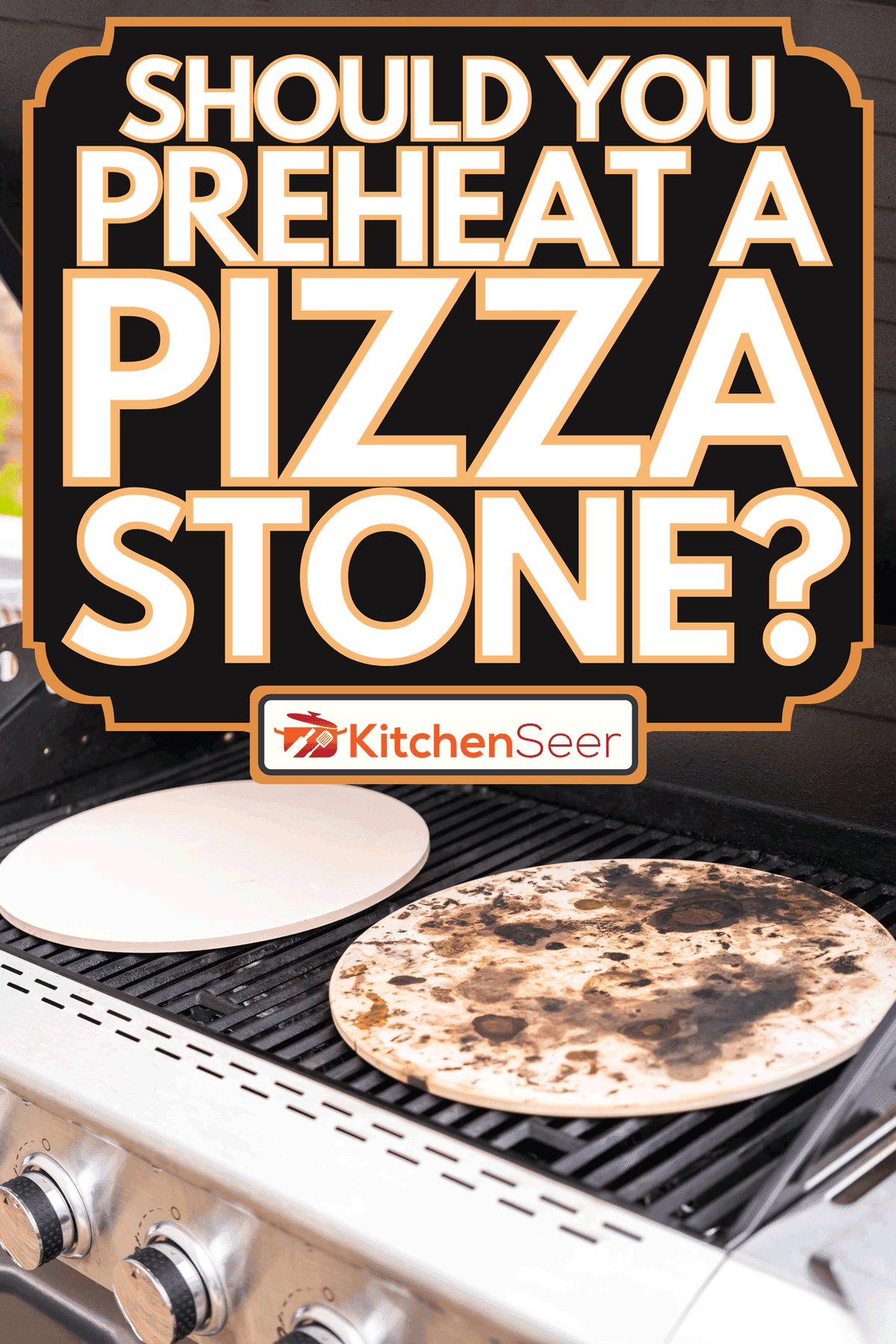
How to use a pizza stone
Traditional pizza ovens are built of stone and burn wood at sweltering temperatures. These ovens can get as hot as 1000º F! While home ovens can't replicate those temperatures, many home cooks use pizza stones or pizza steels to get their pizzas more like the professionals'.
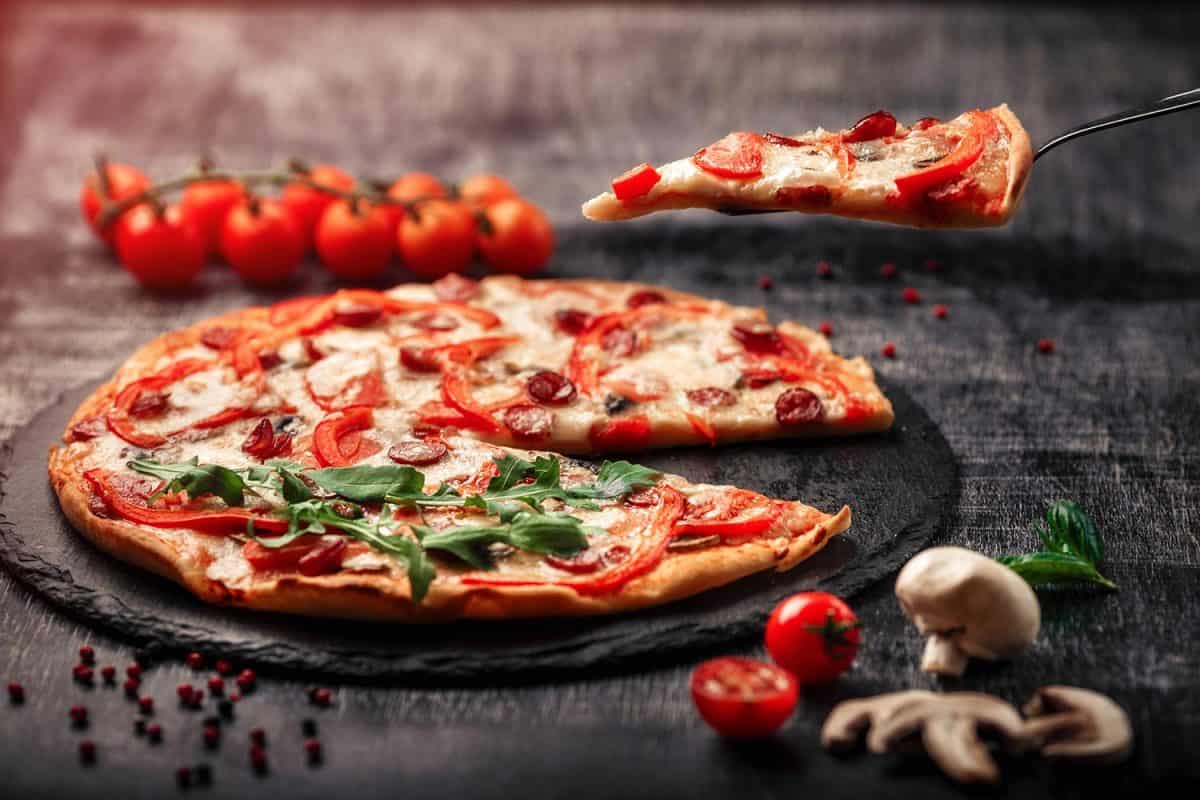
Whether you have a pizza stone or pizza steel, the way to use it is identical. You can see the technique in this video from Home Depot below.
Now that you know the basic method let's look at some key points.
Where to place the pizza stone?
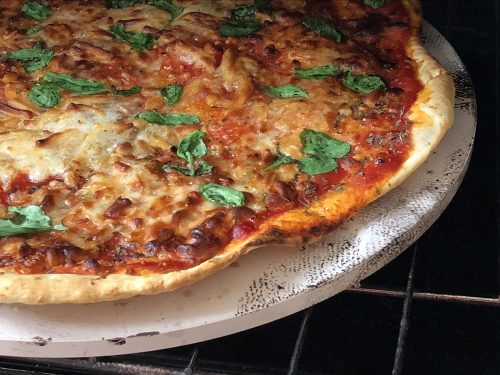
The first step is to place your stone in a cold oven, but where should you put it? While you'd think there would be a clear-cut answer, it's actually a matter of debate.
For example, Eating Well recommends putting the pizza stone on the lowest rack. You'll even see some chefs who recommend putting the stone directly on the floor of the oven.
J. Kenji López-Alt at Serious Eats found that placing the stone on the bottom rack burned the bottom of the pizza after just five minutes of cooking time. He recommends putting the stone on the middle rack or even on the top rack. The top rack seems to have the best results for getting the crust to puff up.
We recommend starting on the middle rack for most even cooking. However, ovens vary, and you may need to adjust the position. If you find that the bottom of your pizza is burnt before the top gets golden-brown, you can move the stone to a higher rack for your next try. If the bottom isn't crisp enough, transfer the stone to a lower rack.
Before putting your pizza on the stone, sprinkle semolina or cornmeal on the stone. This will help prevent the pizza from sticking.
Finally, place your pizza on the stone using a peel or a wooden spatula. Cook until ready, and voila!
What temperature should I heat my pizza stone?
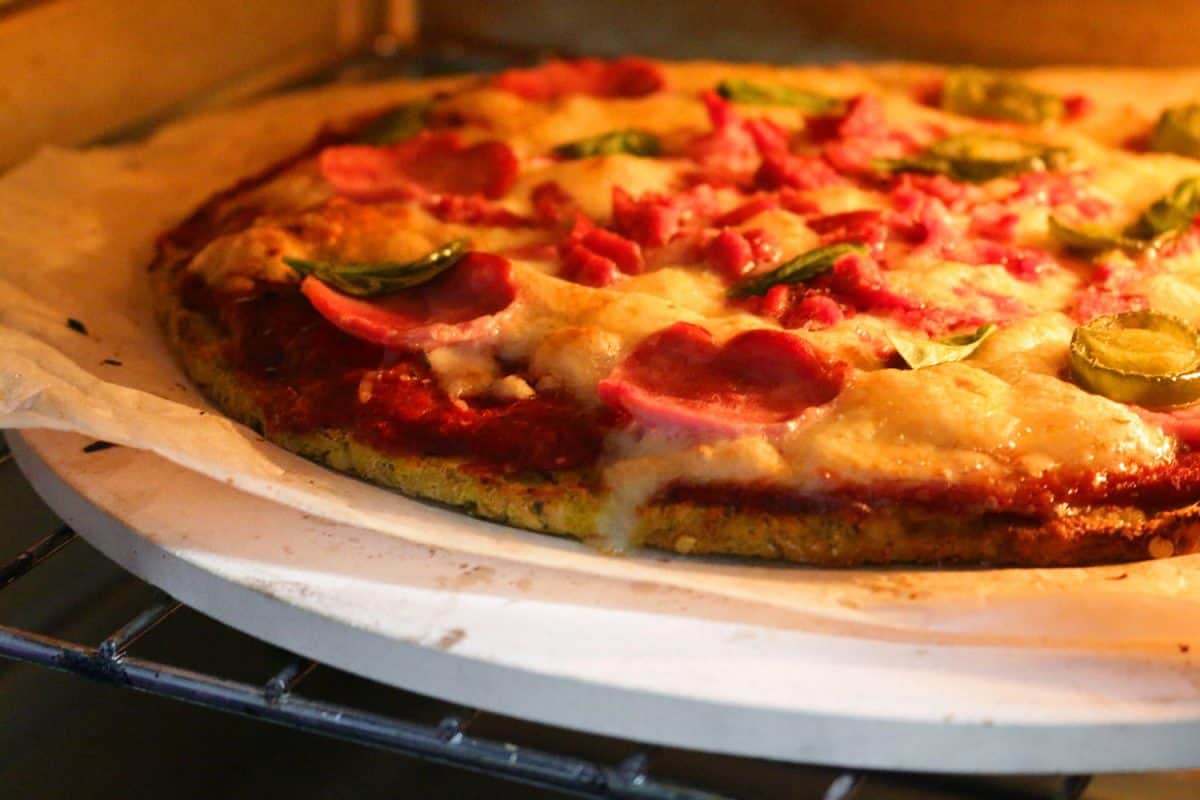
When using a pizza stone in a home oven, you want to get it as hot as possible. Ideally, you want the stone itself to be 500º before using it. This means turning your oven up to 500º or its maximum heat.
These high temperatures do the best job of replicating the scorching heat of the wood-burning pizza ovens traditionally used.
You can learn more about the ideal temperature for different styles of pizza in our article, "How Hot Should a Pizza Oven Be?"
How long does it take to preheat a pizza stone?
We recommend preheating your stone for an hour. Stone is very dense and heavy, which gives it a very high thermal mass. This means that it can store a lot of heat, but it also means it takes a long time to get hot. An hour should give your stone enough time to reach the highest temperature.
If you don't have an hour to wait, you can use the stone after 30 minutes of preheating time. In this case, you may want to use a lower rack. The stone won't be quite as hot, so putting the stone in a lower position will slow down how quickly the top cooks so the bottom can catch up.
Does a pizza stone make a difference?
Although pizza stones and steels have seen increased popularity in the past several years, there are still skeptics. You may well wonder what difference using a pizza stone makes and if it's worth the hassle.
Pizza stones improve pizza in several ways. Pizza stones make the bottom of the pizza more golden and crispy than cooking in a regular tray. This happens for a couple of reasons.
The thermal mass of the pizza stone helps it stay hot after you put the pizza on it, so it continues to cook the pizza at that high heat. The material is also porous, so it can evaporate and absorb some of the steam released as the dough cooks, which helps with crisping.
Pizza stones also improve how much the dough puffs up in the oven. With the high heat from the stone, the gasses in the dough expand quickly, helping raise the crust.
These advantages have more and more home cooks swearing by pizza stones.
That being said, you can still make fantastic pizza without a stone. To learn about the proper technique for cooking pizza on a tray, check out our article, "Do You Need to Grease a Pizza Tray?"
What happens if you don't preheat a pizza stone?
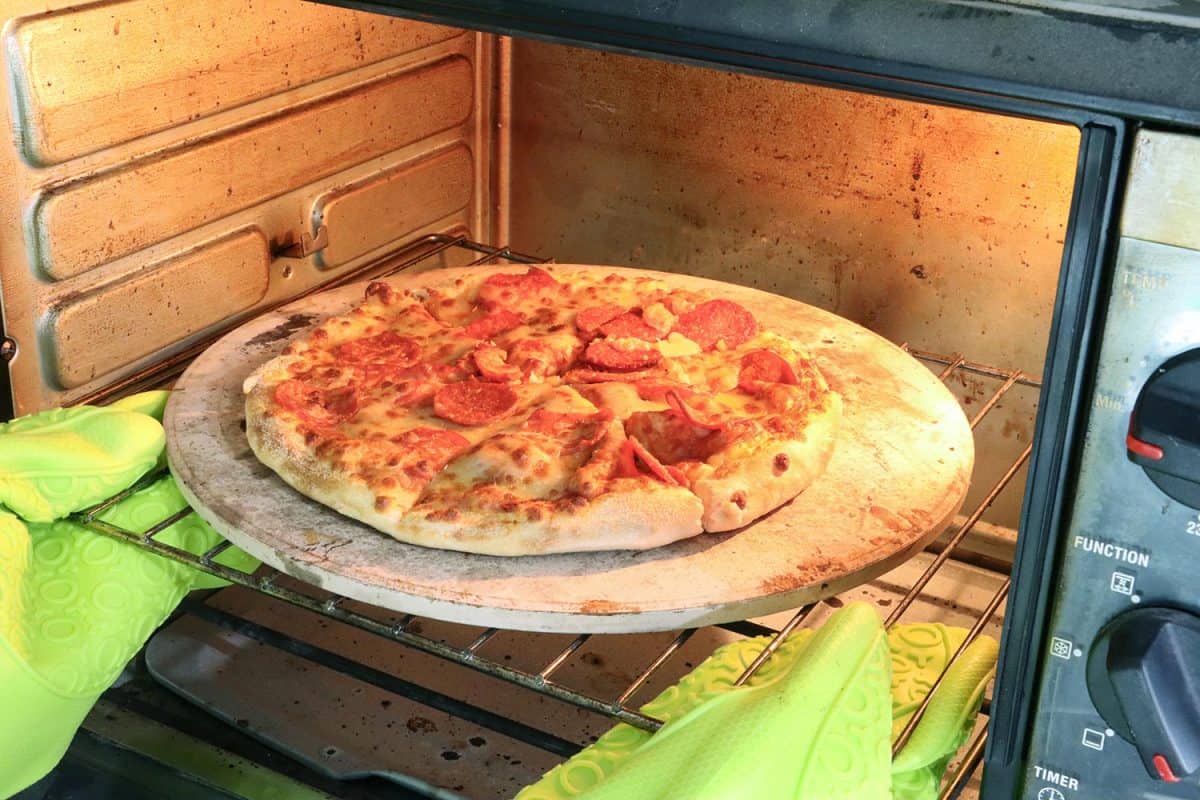
If you don't preheat your stone, you can run into several problems, depending on the situation.
First, if you preheat your oven before putting the stone in, the thermal shock may cause your stone to crack. You won't be able to use it for your pizza and will have to replace it.
The other scenario is you put your pizza stone in the oven, but you only turn on the oven for ten minutes or so before putting in your pizza. In this case, you'll get none of the benefits of the pizza stone because it simply won't be hot enough.
Not only that, but an insufficiently preheated pizza stone can actively make your pizza worse. Instead of acting as a heat source that cooks the bottom of the pizza, the stone may insulate it. By the time the top of your pizza is done or overdone, the bottom might still be doughy.
Are pizza stones and steels used the same way?
So far, we've primarily talked about pizza stones. However, metal products, known as baking or pizza steels, have become a popular alternative to stones. Like the one below from NerdChef, Pizza steels promise to be as or even more effective than stones.
Click here to see this baking steel from NerdChef on Amazon.
When cooking pizza on steel, follow the same preheating process as with a pizza stone. When baking your pizza, you may find that it cooks faster on the pizza steel. This is because steel conducts heat more quickly than the ceramic material used for pizza stones.
Pizzas cooked on steel may also develop more dark spots on their crust. These are a good thing! They're called "leopard spots" in the pizza world and are more typical of pizzas made in a wood-burning oven.
One disadvantage of steels comes when making multiple pizzas. The steel will benefit from some time to heat up again between pizzas, just 10 to 15 minutes. When cooking on stone, you can immediately throw the next pizza on.
Another disadvantage of steel is the price tag. These products tend to cost more than traditional pizza stones. If you want great results without an upfront investment, you may want to stick with a stone, like the one below from Homepro.
Click here to see this pizza stone on Amazon.
Final Thoughts
With a pizza stone or steel, you won't need to fly to Naples or New York to have top-tier pizza. By following these guidelines, you'll be making your own in no time.
Today, we've seen that preheating your pizza stone is more than just a good habit; it's the secret to getting a perfect crust for your pizza. We've also learned more about the ideal temperature and time for prepping your pizza stone. We even took a look at the differences between pizza stones and steels.
With this knowledge in hand, you'll be well on your way to making mouthwatering pizza at home. Happy cooking and bon appétit!







![Pizza boxes stack isolated on white - How Big Is A Pizza Box [By Brand]](https://kitchenseer.com/wp-content/uploads/2022/04/Pizza-boxes-stack-isolated-on-white-250x250.jpg)
